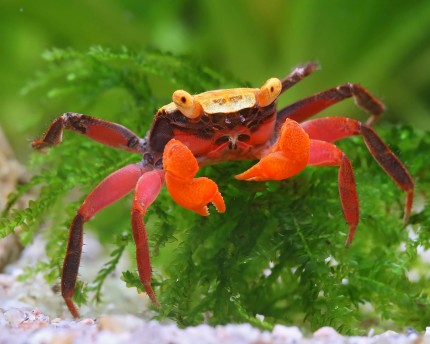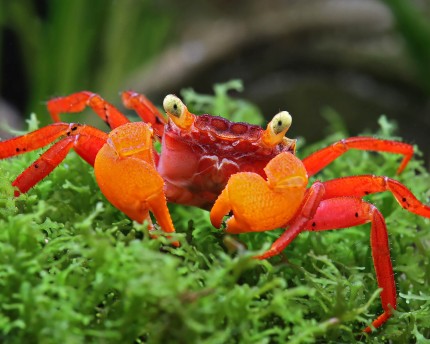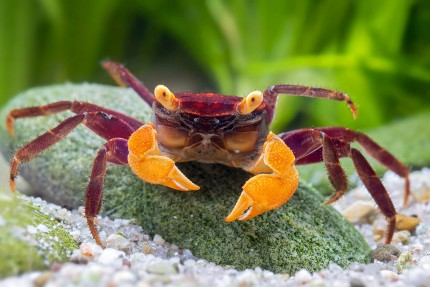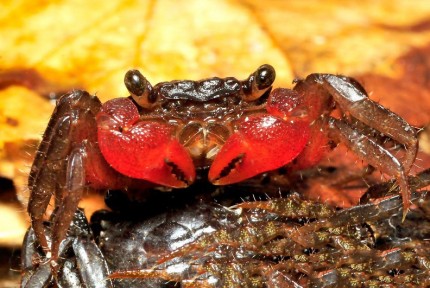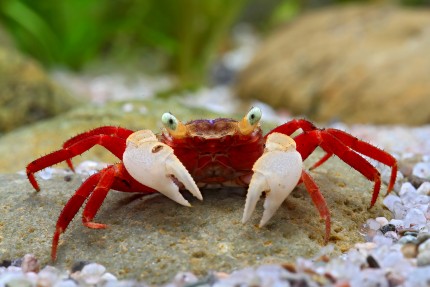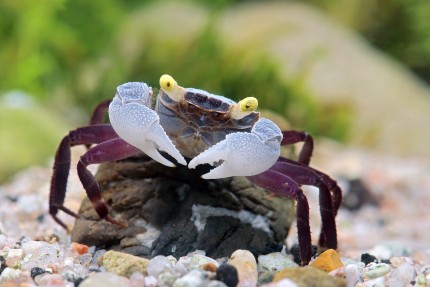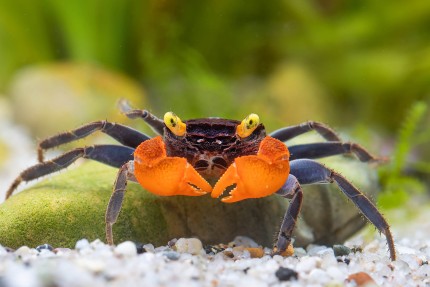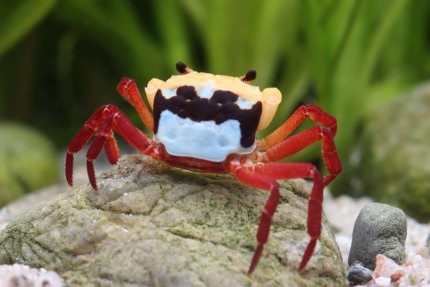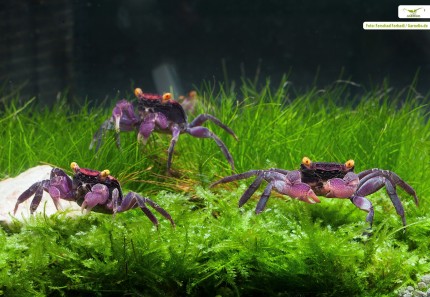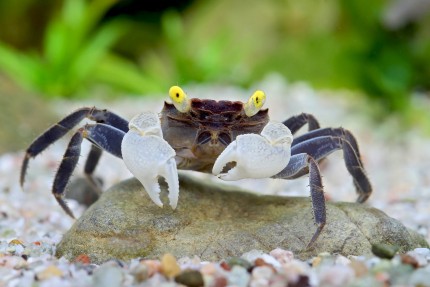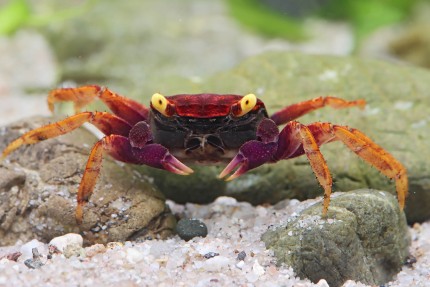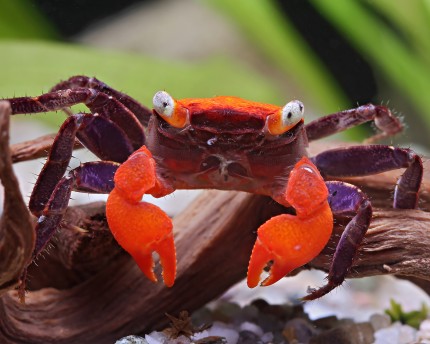The beautiful colorful little purple vampire crabs belong to the terrestrial, i.e. mainly land-dwelling genus Geosesarma. They were described last year as Geosesarma dennerle. The awesome Blue Devil Vampire Crab also belongs to this genus. The Blue Devil Vampire Crab has not yet been determined to species and is therefore listed as Geosesarma sp. The Golden Top Vampire Crab is also not yet determined. The Disco Vampire Crab Geosesarma tiomanicum looks like an eighties party, and the Red Devil Crab Geosesarma hagen has intensely colored red claws. The mandarin crab Geosesarma pontianak, on the other hand, is orange. The bicolor vampire crab Geosesarma bicolor lives up to its name, it is purple and bright yellow-green. All Geosesarma need only a low water part. On the land part they need hiding places, all vampire crabs like to dig. Geosesarma are pure carnivores and hardly go for vegetables. Geosesarma belong to the specialized reproductive type. Females carry large eggs in their abdominal flap, which hatch into fully developed small crabs that do not require salt water.
Also belonging to the pure land crabs, in addition to the marble crab Metasesarma obesum, is the chameleon crab Metasesarma aubryi. Both crab species require only a shallow water section and can actually drown in deeper water. Metasesarma aubryi and Metasesarma obesum belong to the mangrove crabs. They reproduce through larval stages, and their offspring need seawater or brackish water to grow large. For molting, both Geosesarma and Metasesarma nevertheless like to go into the shallow water bowls that should be in a crab terrarium for vampire crabs or the chameleon crab.
The Neon Face Mangrove C rab Perisesarma eumolpe is also a mangrove crab, as are the Red Mangrove Crab Pseudosesarma moeshi and Neosarmatium africanum. These mangrove crabs live semi-terrestrially, which means they all need a large water section of at least 50% in the aquaterrarium as well as a land section where they can dig extensively. There should be at least two more exits than crabs in the water tank. In nature, mangrove crabs live in very deep burrows. Mangrove crabs are omnivores, preferring to eat brown foliage, but will not say no to fruits, vegetables and protein foods.
The multicolored land crab Heterochelamon sp. from Southeast Asia also needs a large water section, as does the Indonesian giant land crab Cardisoma carnifex, it should take up about 50% in its aquaterrarium. Cardisoma armatum, the well known Harlequin C rab, is also a candidate for a large aquaterrarium with a spacious water tank.Also the Queen Crab Thaiphusa sirikit, formerly known as Demanietta sirikit, is a peaceful land crab, which is excellent to keep in an aquaterrarium with a nice large water section even in pairs.
Uca tangeri, the European fiddler crab, is found in Europe on the seashore. It prefers salt water and a sandy land part where it can dig, even in an aquaterrarium. With their large claws, male fiddler crabs are very conspicuous. Uca tangeri is known and loved for its interesting social behavior.
All of these crabs love to climb for a living and need variety in their aquaterrarium so they can behave in a manner typical of their species. Attention danger of escape - a crab terrarium must close tightly, otherwise the crabs will go on a voyage of discovery in the apartment. As is typical for crabs, large species with strong claws can even lift a loosely placed lid. The air in the aquaterrarium should be quite humid with about 80%, so that the gills of the beautiful land crabs do not dry out.

